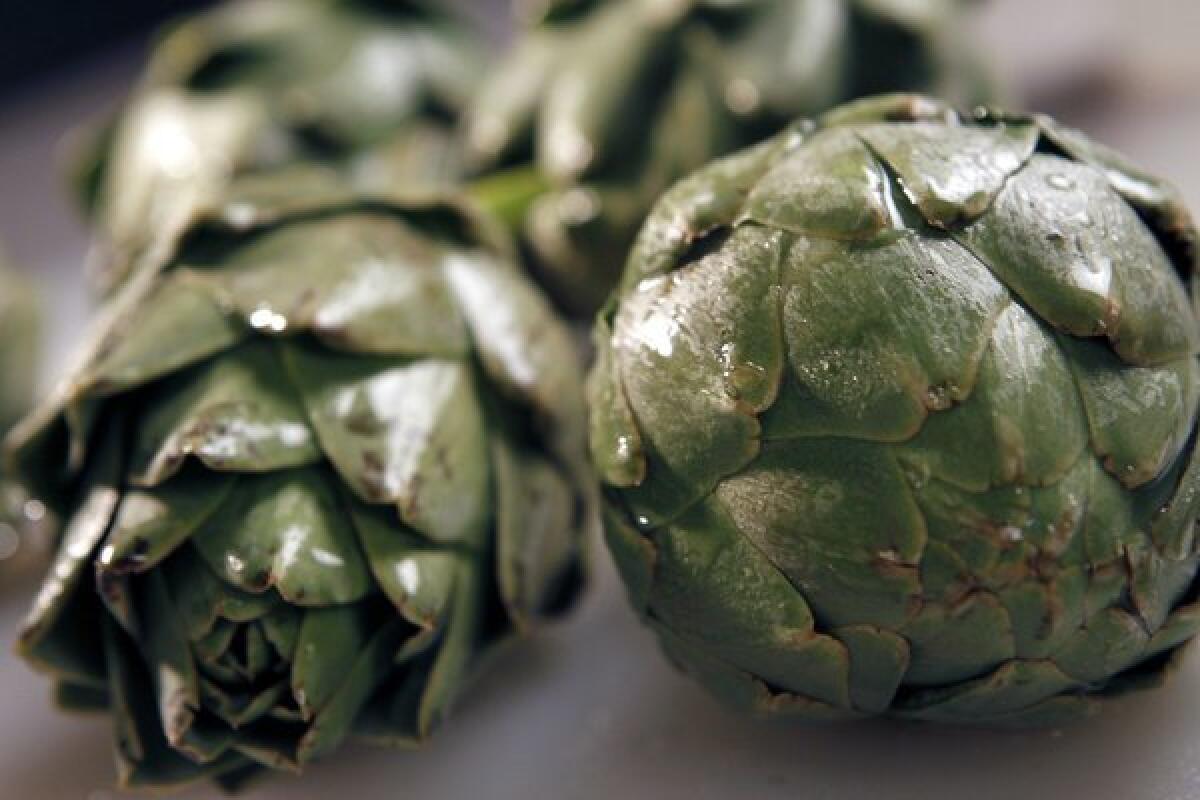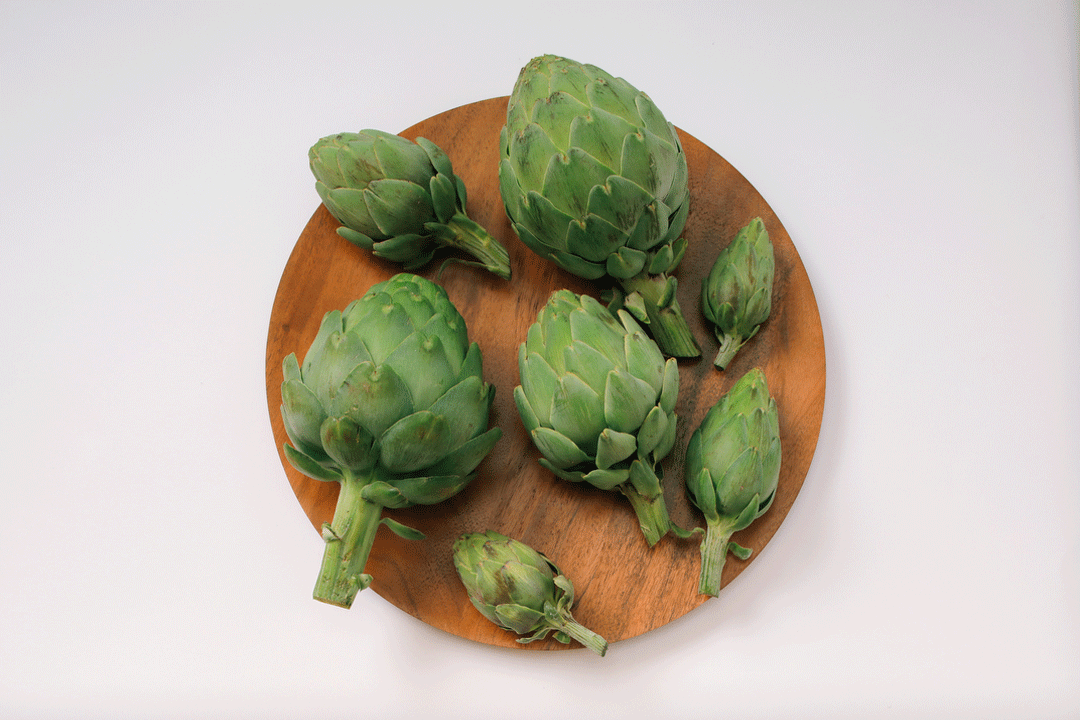The California Cook: Let artichoke possibilities flower

I was giving one of my periodic talks at local libraries the other day, and someone asked if I knew a good way to prepare artichokes. It stopped me cold. “A” good way? Only one? Which one? Do you want artichokes by themselves? Do you want artichokes as an ingredient? Do you want them cooked or do you want them raw? Too many choices.
Despite the fact they look so unquestionably inedible, there is no shortage of ways to cook artichokes. In fact, just talking about them for a couple of minutes got me so hungry I went home and prepared an all-artichoke dinner.
That may sound strange. The vast majority of artichokes are consumed only one way: boiled or steamed and served with drawn butter or flavored mayonnaise. And certainly, there’s absolutely nothing wrong with that. The only problem is believing that that’s where artichokes end. There’s a lot more to the artichoke than you might have thought.
Granted, there are a few things you need to be aware of when you’re cooking them. Artichokes take some preparation, to be sure (see the accompanying box).
And don’t leave out the step of periodically dipping them in acidulated water, or they’ll turn dark and rusty (it’s ugly, but not harmful, a result of the same kind of enzymatic browning that occurs to a lesser extent in a wide range of fruits and vegetables, including apples, potatoes and bananas).
Maybe the most important thing to remember, though, is to pass by those big old artichokes you used to use for steaming (growers call them “hubcaps”) and choose instead either medium or baby chokes. These are different from the big guys only in size, not in maturity or flavor.
A typical artichoke plant will produce one or two hubcaps, a half-dozen or so mediums and even more “babies.” So the big chokes are not only the most commonly used, they’re also the scarcest, and that adds up to a high price. You can usually find the smaller chokes at a fraction of the cost (around 75 cents apiece for mediums, as opposed to three bucks or more for the largest).
So what do you do with these little artichokes? They’re great simply glazed as a side dish: Quarter them, put them in a skillet with just enough water to cover the bottom and a good glug of olive oil; cook covered at medium until they’re tender, then remove the lid and increase to high until the liquid evaporates to form a syrup; season as you wish (garlic certainly, other herbs as seem right).
You can use this basic technique to start all sorts of dishes — sauces for pasta, first step in risottos, even vegetable stews. I love the combination of artichokes and potatoes, particularly when you bind them with cream and bacon.
If you want to be one of the cool kids, the thing to do is serve artichokes raw. I know it sounds weird, and only a couple of years ago it was almost unheard of. But they are good if you shave them very, very thin (1/16 inch is noticeably better than 1/8) and season them very aggressively with lemon juice and olive oil. They’ve got a great crunch and a subtly sweet flavor.
Never underestimate an artichoke.
More to Read
Eat your way across L.A.
Get our weekly Tasting Notes newsletter for reviews, news and more.
You may occasionally receive promotional content from the Los Angeles Times.










